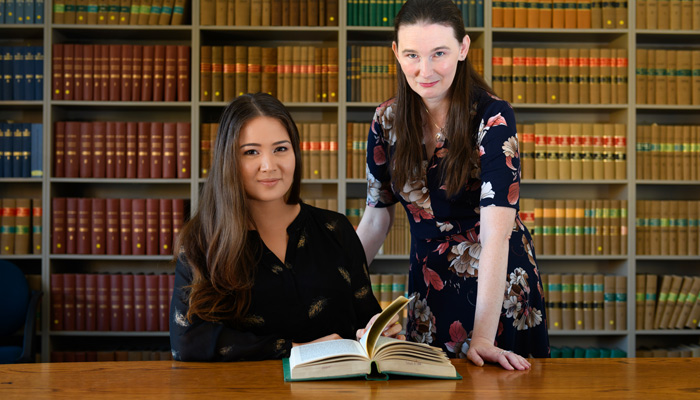Australian eSafety Commissioner Julie Inman Grant has confirmed that Dutch police have seized an infamous ‘revenge porn’ forum and arrested three men following a year-long investigation.

New offences: Zara Bending and Dr Shireen Daft from the Macquarie Law School say NSW is the first Australian jurisdiction to address the use of altered images under eSatefy law attaching a penalty of $11,000 three years imprisonment or both.
Disturbingly, it has emerged that a wealth of personal data and images had been collected through accessing poorly secured email inboxes, social media accounts and repositories (including clouds) without the knowledge or consent of hundreds of victims. The forum, identified as the Anon-IB hosted ‘AussieSluts’ saw nude images and videos of Australian women and girls traded (called ‘wins’ on the forum).
The Commissioner explained that “AussieSluts was one of the more popular [forums], that was used by young Australian boys that were trading girls’ images like they were footy cards”.
As the next round of what the Commissioner describes as ‘whack-a-mole’ begins (as users move to other websites), the incident has caused Australian commentators to reflect on what can be done locally to stem the tide against image-based abuse (IBA) as awareness of the IBA’s prevalence grows. Research from RMIT found that about 1 in 5 Australians aged 16-49 have experienced IBA, although women aged 18-24 are more likely to be targets.
While the term ‘revenge porn’ is often used for such sites, this term is misleading as revenge only constitutes one of the many motivating factors behind the sharing of these images. Many of the victims involved have no knowledge that their images are being shared in this way, and the images used may have been taken without their knowledge, ripped from their social media accounts, and innocuous images may be manipulated to render them pornographic.
New offences in NSW have serious penalties IRL
The Crimes Amendment (Intimate Images) Amendment Act 2017 (NSW) brought significant changes to the law in NSW, and was designed to address the variety of ways that criminals are able to use technology to harass, humiliate, shame, coerce or sexually objectify their chosen target.
The legislation introduced three new offences under the Crimes Act 1900 (NSW), currently punishable by a maximum of $11,000, three years imprisonment, or both. The offences are: the recording of an intimate image without consent, distributing an image without consent, and threatening to record or distribute an intimate image without consent. The inclusion of a standalone crime of ‘threatening to record or distribute’ was done to address known patterns in domestic violence whereby abusive partners resort to such brazen tactics to control victims and prevent them from leaving relationships. Upon finding a person guilty of recording or distributing, a court may order that the offender take reasonable actions to ‘remove, retract, recover, delete or destroy’ any images or face a maximum penalty of $5500 or imprisonment for two years, or both.
The NSW legislation is innovative in that it is the first Australian jurisdiction to explicitly address the proliferation of ‘altered images’. Macquarie University law alumna and key proponent of the new legislation, Noelle Martin explains that technology has afforded abusers a range of techniques in creating these images, including: ‘face swapping’, ‘transparent edits’, ‘cumonprintedpics’, ‘bodily alterations’, ‘juxtapositions’ and ‘unidentifiable alterations’ (each is explained at https://contemporarywomen.org).
Lawmakers keeping pace with technology
Ms Martin often uses her own experience with ‘altered images’ as a cautionary tale in her advocacy, following years of seeing her face photo-shopped onto the bodies of naked women on the covers of pornographic films (along with her full name) and spread across the internet on multiple sites. While most of the sites she contacted cooperated and deleted the offensive material, one Webmaster refused to do so unless she provided intimate images of herself. When she refused, he then threatened to send the altered images to the university and her parents.
The nature and patterns of IBA underscores the need for lawmakers to keep pace with technology. While the online nature of the crimes creates practical and jurisdictional challenges in effectively locating the perpetrators, and bringing them before the courts, the amendments serve as a warning for abusers who believe their online habits have no consequences IRL.
At the very least, the passing of IBA laws, investment in lengthy cyber-crime investigations, and international recognition of the harm done to victims drives home the seriousness of offences and helps to unravel the cycle of ‘shame and blame’ that typically sees survivors reluctant to come forward.
Children are both victims and perpetrators
Young people - and concerned parents and teachers - should note that the legislation acknowledges that children can be victims and perpetrators and specifies how the provisions will operate with respect to persons under the age of 16.
- Persons under the age of 16 cannot consent to the recording or distribution of an intimate image;
- The offences of recording and distributing can only apply when the image is of another person, so will not apply to young people who record or distribute images of themselves. That said, this should not operate to discourage victims from coming forward to report should a situation escalate.
- Prosecutions of persons under the age of 16 require approval of the Director of Public Prosecutions, with diversionary measures under the under the Young Offenders Act 1997 (NSW) available.
Support service for victims
The Office for eSafety Commissioner has a dedicated online resource to support all Australians who have experienced IBA, by providing reporting options, support and resources for victims, their family and friends, and bystanders: https://esafety.gov.au/image-based-abuse/



